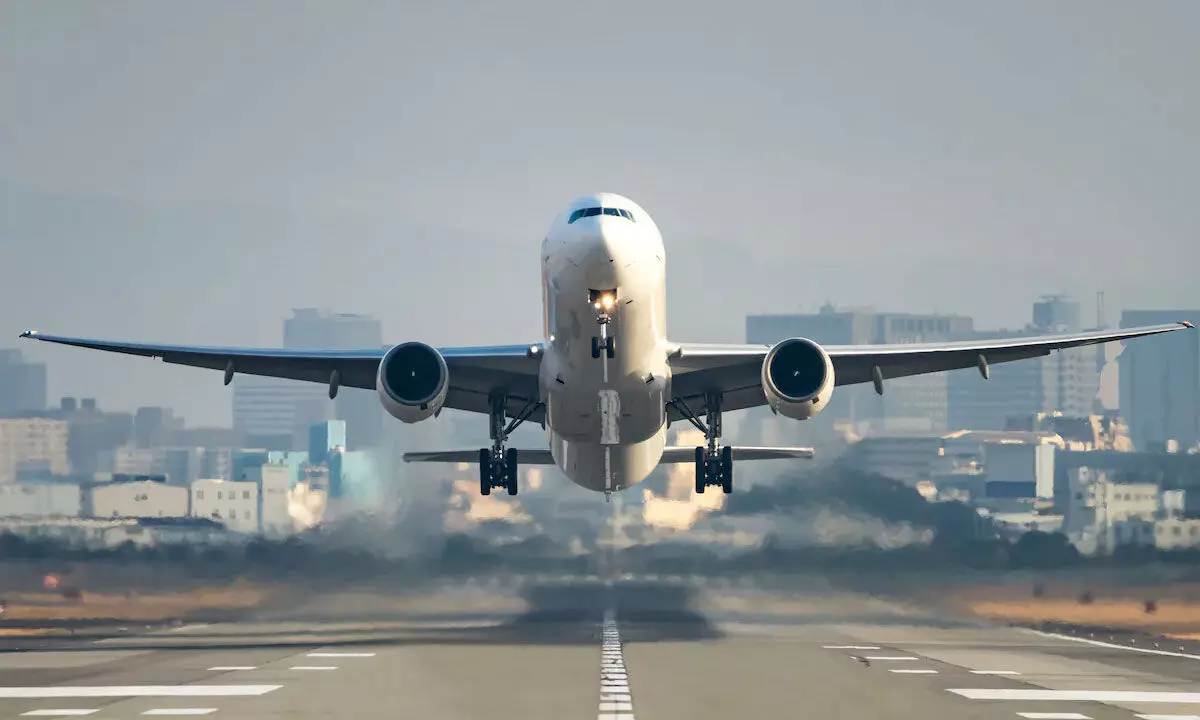Onus on all carriers to achieve net-zero aviation globally

Onus on all carriers to achieve net-zero aviation globally
Improving sustainability is important for airlines, their passengers and – most of all – to the planet.
Improving sustainability is important for airlines, their passengers and – most of all – to the planet. It is towards this end that all airlines are doing everything possible to reduce both fuel burn and carbon emissions. In fact, a growing number of airlines have committed to becoming carbon-neutral in the decades ahead.
Honeywell has pledged to become carbon-neutral by 2035. "Our commitment also extends to applying our unique capabilities to helping the customers achieve their sustainability objectives with Honeywell Flight Efficiency – the industry's most advanced and capable enterprise performance management solution," says the management about their vision.
Greening the world's energy production, transport, waste treatment and other critical infrastructure will require massive investment, in double-quick time. And most of what needs to be built is in emerging markets, where there's much less financing compared to the richer countries. The imbalance is a big problem because climate change doesn't respect borders. Greening only wealthier countries won't protect them from natural disasters arising from a warmer planet.
The global aviation industry has agreed to try to achieve net-zero emissions by 2050. International Air Transport Association (IATA) says using sustainable fuels and carbon offsetting will contribute more than 80% of the reduction in emissions. Other low-emission technologies like electric and hydrogen-powered aircraft are also being developed by major aviation players like Airbus.
Aviation is responsible for around 2.5% of global CO2 emissions, with most aircraft powered by jet gasoline. The European Commission predicts that by the middle of the 21st century, demand for flying could increase aviation's greenhouse gas emissions by upwards of 300% over 2005 levels if no drastic measures are taken to reduce them now. In October, the UN's International Civil Aviation Organization (ICAO) led two weeks of negotiations involving 184 nations to agree on measures reducing CO2 emissions. These include ramping up innovative aircraft technologies, "streamlining" flight operations and the increased production and use of sustainable aviation fuels (SAF). Sustainable aviation fuels can reduce emissions by 80% according to IATA. SAF can be made from several sources ranging from agricultural waste to carbon captured from the air.
It is fully compatible with existing aircraft and fueling infrastructure. However, high production costs and limited supply has slowed its adoption. It is estimated that SAF comprises less than 0.1% of all jet fuel currently used.
IATA estimates that SAF could make up around 65% of the emissions reduction needed by aviation to reach net-zero by 2050. But it says "this will require a massive increase in production in order to meet demand. The largest acceleration is expected in the 2030s as policy support becomes global, SAF becomes competitive with fossil kerosene and credible offsets become scarcer."
With short-haul flights of fewer than 600 miles accounting for more than 17% of airline emissions, new technologies like electric and hydrogen-powered aircraft are also being developed. It's been estimated that all flights of fewer than 2,500 miles, which make up more than half of all CO2 emissions from aviation, could be electrified or, alternatively, powered by hydrogen.
Airbus is developing three types of hydrogen-fuelled zero-emission commercial aircraft which it says could enter service from 2035. They are: a turboprop plane carrying up to 100 passengers with a range of more than 1,000 nautical miles; a turbofan design (120-200 passengers) with a range of 2,000-plus nautical miles; and a "blended-wing body" design(up to 200 passengers), which can fly over 2,000 nautical miles.
Achieving net-zero by 2050 will require a combination of maximum elimination of emissions at the source, offsetting and carbon capture technologies: 65% SAF; 13% New technology and electric and carbon capture technologies; three per cent infrastructural and operational efficiencies and 19% offsets and carbon capture. In December 2020, EPA finalized greenhouse gas standards for aircraft, requiring aircraft manufacturers to meet fuel efficient limits based on its specific aircraft/engine combination and size of fuselage.
Covered aircraft include subsonic jet aircraft — ranging from smaller jet aircraft such as the Cessna Citation CJ3+ to larger jet aircraft such as the Boeing 777 — and subsonic turboprop aircraft — like the Viking Q400. The rule would apply to new aircraft designs submitted to FAA for certification starting this year and for aircraft production tentatively starting in 2028.

















